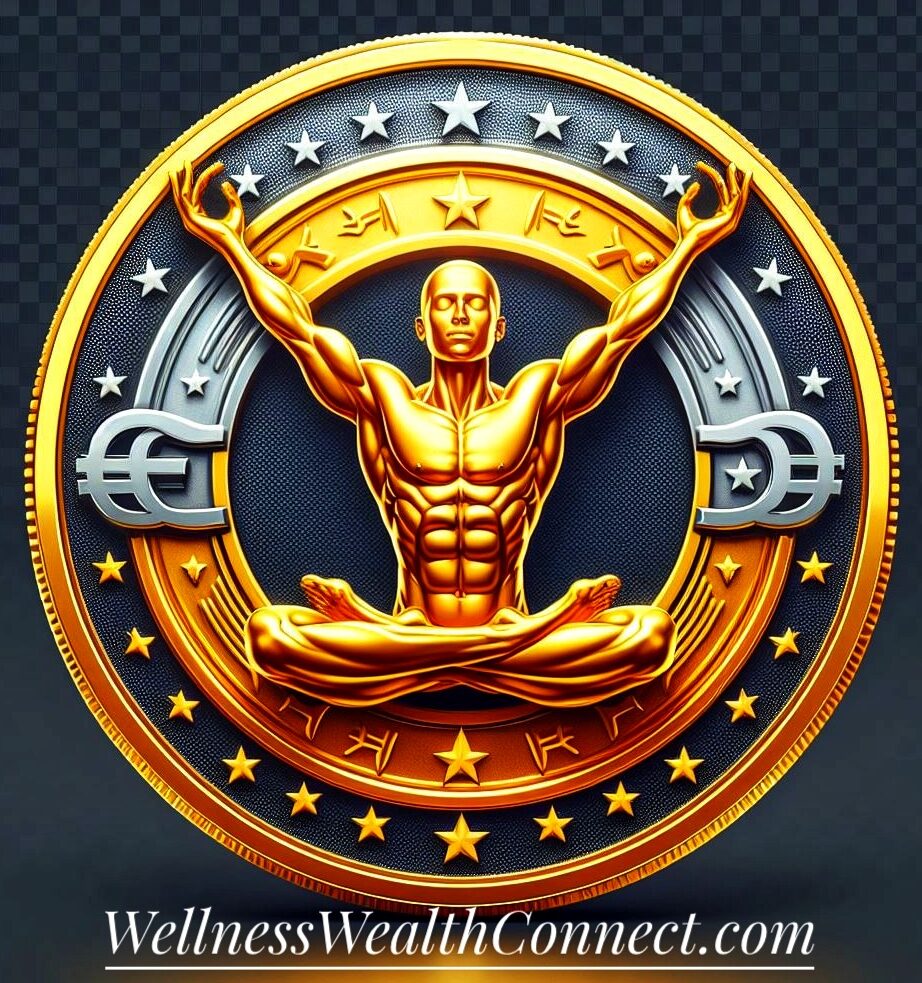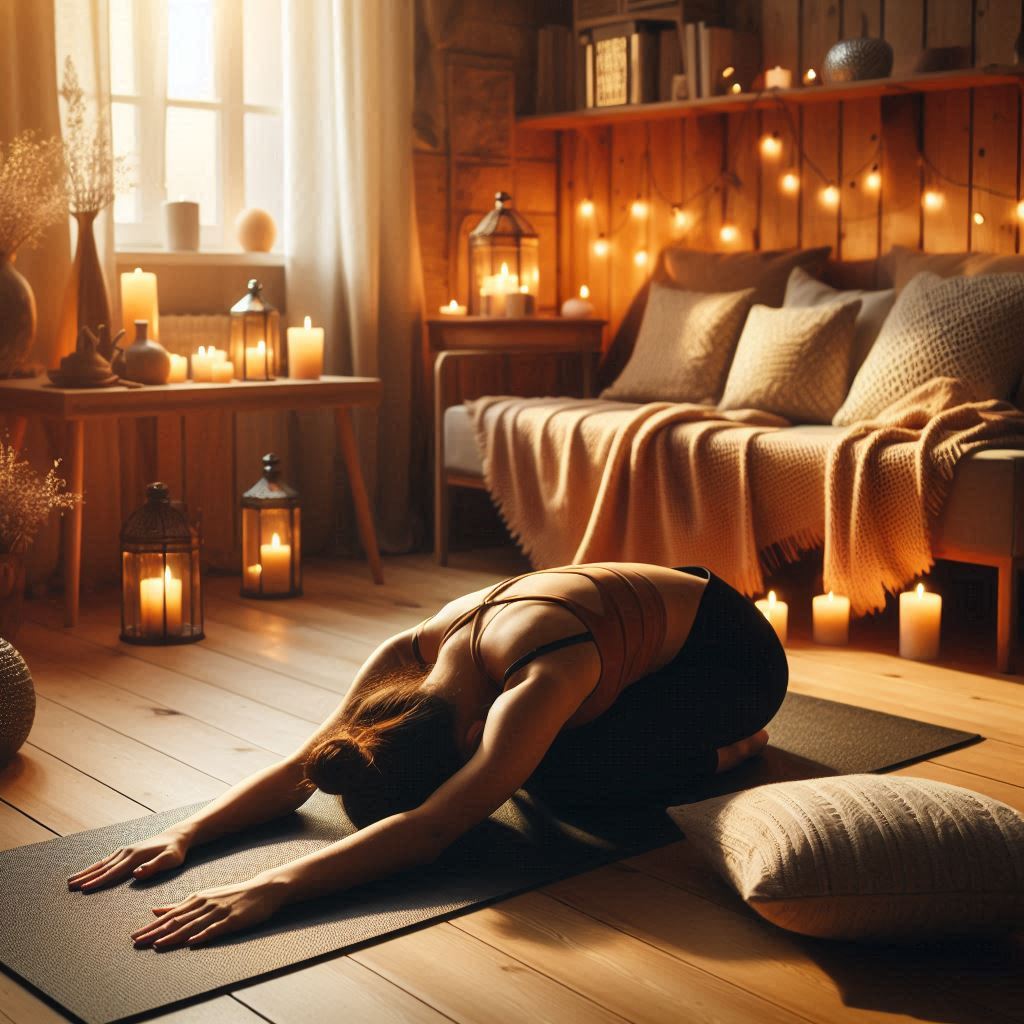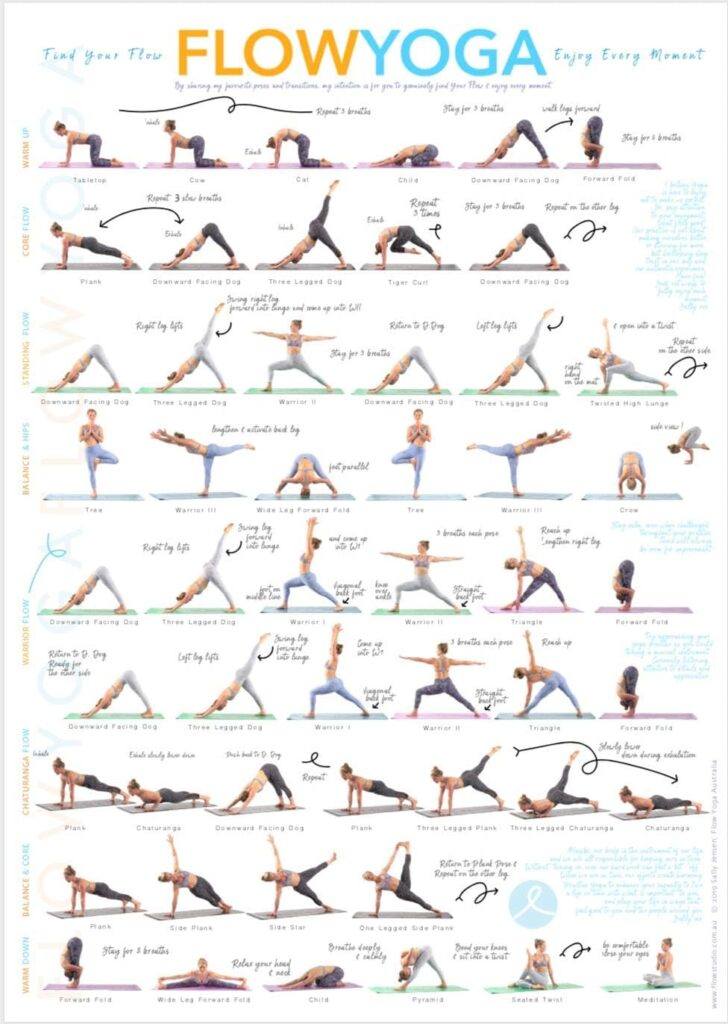
I’m going to start with the basics because a strong foundation is key in any yoga practice. You’re going to find out about balance, breathing, and alignment, three core principles that are crucial for both new and experienced yogis alike.
If you want to ensure you’re set up for success, choose a yoga mat that feels comfortable and provides a good grip, so you can focus on your poses without slipping. Also, a few accessories like blocks or a strap can be very helpful, especially when you’re starting.
Now, before we jump into poses, a good warm-up is essential. I’m here to guide you through simple stretches that can help prevent injuries and get your body in tune for the yoga practice. Think of it like setting the stage for the main act, which is your progression through the poses.
In my opinion, every beginner should master the Mountain Pose (Tadasana). It’s the groundwork upon which many other poses are built. You’ll soon see that it’s more than just standing still; it’s about discovering the art of balance and posture.
After nailing down the Mountain Pose, you’re ready to build strength and stability with the Downward-Facing Dog. It’s a pose you’ll come across in almost every yoga class. And don’t worry too much about getting it perfect right away; I’ll walk you through the common aligning techniques and how to adjust the pose to match your level.
A big part of yoga is about enhancing flexibility and balance, so we’ll explore the Tree Pose. It’s not just a balance challenge; it’s a chance to deepen your focus and steady your mind.
Also, we can’t forget about relaxation. The Child’s Pose is your go-to for calming the mind and easing the body. It’s a great way to wind down your practice and integrate the benefits of the poses you’ve learned.
With these foundational poses, you’ll be equipped with the tools needed to approach more complex asanas, or yoga poses, down the road. Plus, we’ll talk about breathing techniques that are the lifeblood of your practice — they can transform your experience from the inside out.
BEST HOT YOGA GEAR: Unlock Your Yoga Journey: Discover the Hidden Gem for Your Perfect Gear!
Find Your Perfect Match: Choosing The Right Yoga Mat
Unrolling your yoga mat is the first step to a centering practice, but with so many options available, choosing the right one can feel overwhelming. Fear not, yogi-to-be (or yogi looking to upgrade)! This guide will help you find the perfect mat for your practice.
Consider Your Needs:
- Thickness: Standard mats are 1/8 inch thick, offering a good balance of comfort and stability. Beginners or those with sensitive joints may prefer a thicker mat (up to 1/4 inch) for extra cushioning. Thinner mats (around 1/16 inch) are ideal for experienced yogis who prioritize stability and a close connection to the floor, particularly for flow styles of yoga.
- Material: PVC mats are durable and affordable, but may not be eco-friendly. Natural rubber mats offer excellent grip and cushioning but can be more expensive and unsuitable for latex allergies. Consider exploring mats made from cork, jute, or recycled materials for a more sustainable option.
- Length and Width: Standard mats are 68 inches long and 24 inches wide. If you’re tall, look for a “longer” mat (up to 72 inches). Wider mats (up to 30 inches) provide extra space for comfort.
- Portability: If you take your yoga practice on the go, consider a travel mat. These are thinner and lighter, making them easier to transport.
Pro Tip: When shopping online, look for mats with a textured surface for extra grip, especially if you practice hot yoga or sweat a lot.
Namaste to Your Perfect Practice:
By considering your needs and preferences, you can find a yoga mat that supports your practice and enhances your journey towards inner peace and physical well-being. Now, unroll, breathe deep, and find your flow!
How Should A Beginner Start Yoga?
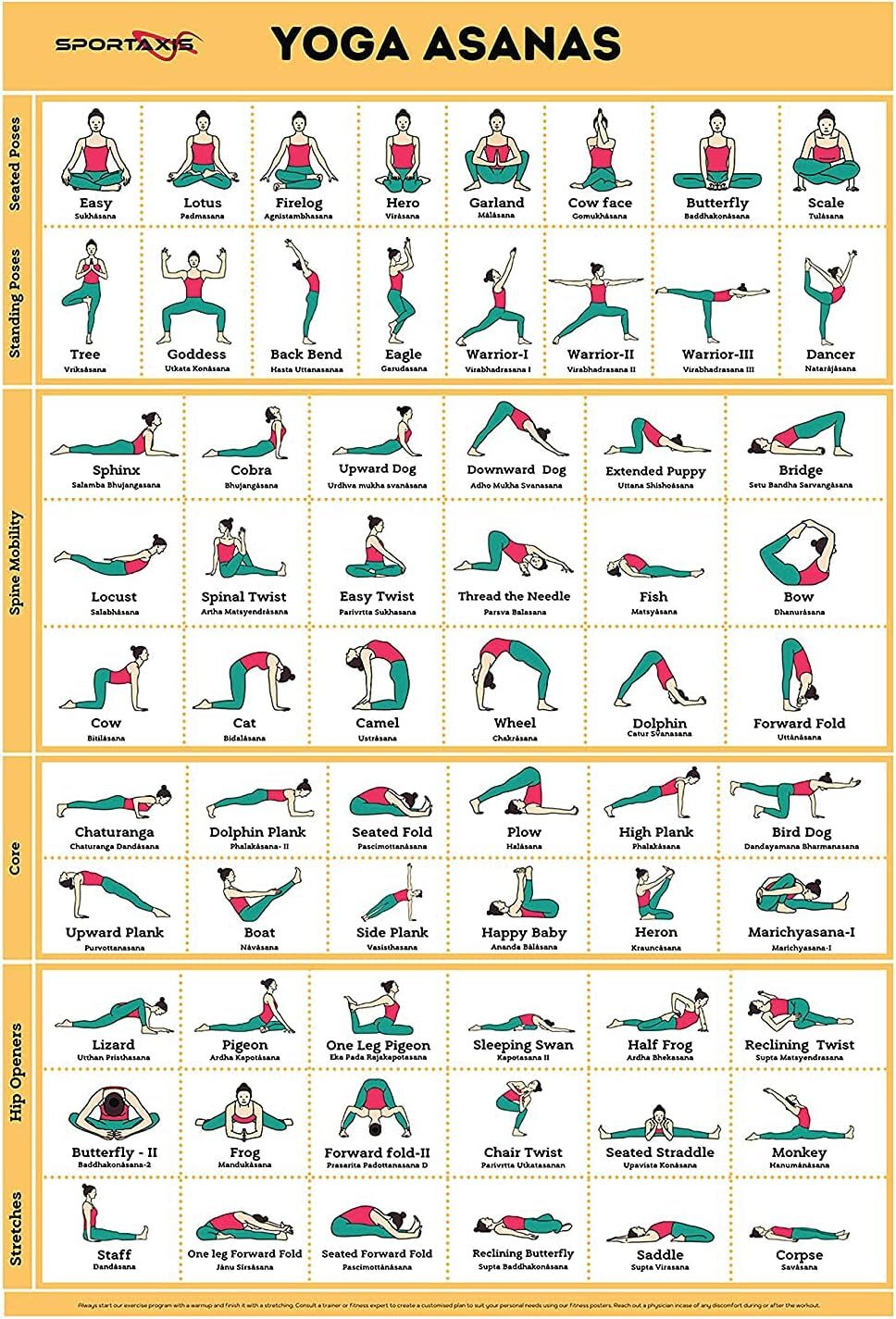
If you’re new to yoga and wondering which poses to try, you’ve come to the right place. Here’s a comprehensive list of the top 50 yoga poses for beginners, with detailed descriptions, benefits, and tips to help you start your yoga journey. Learn how to master these poses and embrace the benefits they bring to your body and mind.
Mountain Pose (Tadasana)
- Description: Stand tall with feet together, shoulders relaxed, and arms at your sides. This pose sets the foundation for proper alignment.
- Benefits: Improves posture, increases body awareness, and strengthens legs.
- Tips: Engage your core and keep your gaze straight ahead.
Downward-Facing Dog (Adho Mukha Svanasana)
- Description: Start on hands and knees, then lift hips upward to form an inverted “V.” Keep hands shoulder-width apart and feet hip-width apart.
- Benefits: Stretches hamstrings and shoulders, strengthens arms and legs.
- Tips: Keep fingers spread wide for stability, and maintain a straight spine.
Child’s Pose (Balasana)
- Description: Kneel on the floor, then sit back on your heels and lower your forehead to the ground with your arms extended forward.
- Benefits: Calms the mind, and gently stretches the back and hips.
- Tips: Keep your big toes together and knees apart for comfort.
Warrior I (Virabhadrasana I)
- Description: Step one foot forward, bend the knee and raise your arms overhead. Keep your back foot angled slightly outwards.
- Benefits: Builds strength in legs and shoulders, and enhances focus.
- Tips: Square your hips forward and keep your front knee aligned with your ankle.
Warrior II (Virabhadrasana II)
- Description: From Warrior I, extend arms parallel to the ground and turn head to look over front hand.
- Benefits: Strengthens legs and arms, and improves balance and concentration.
- Tips: Keep shoulders relaxed and hips facing forward.
Triangle Pose (Trikonasana)
- Description: Extend one leg out to the side, reach downward with one hand, and upward with the other, forming a triangle.
- Benefits: Stretches sides, and improves flexibility and balance.
- Tips: Keep your chest open and gaze toward your top hand.
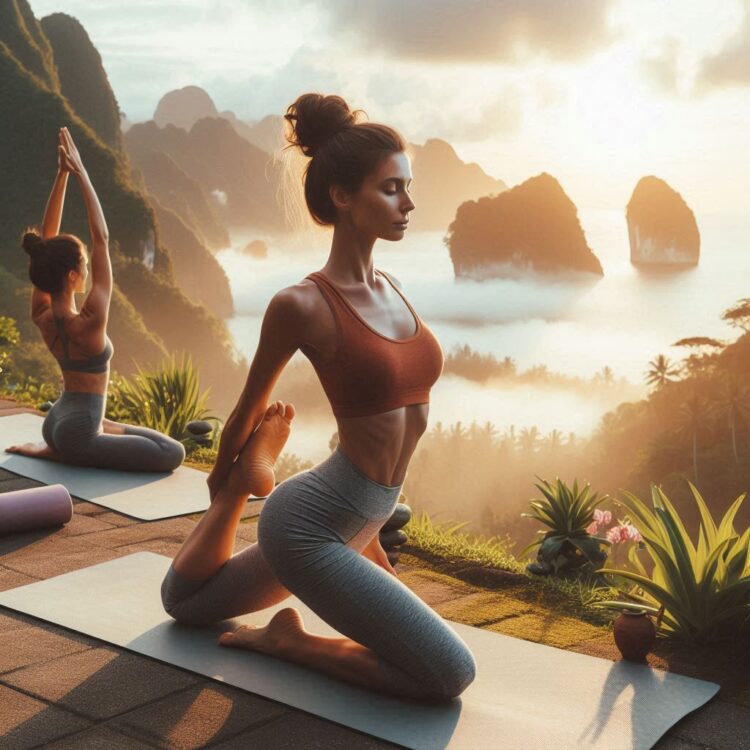
Tree Pose (Vrksasana)
- Description: Stand on one leg, place the foot of the other leg on the inside thigh or calf, and bring your hands to the prayer position.
- Benefits: Improves balance, and strengthens legs and core.
- Tips: Focus on a point to maintain balance and keep your core engaged.
Bridge Pose (Setu Bandhasana)
- Description: Lie on your back, bend your knees, and lift your hips upward while keeping your feet flat on the ground.
- Benefits: Strengthens glutes and lower back, opens the chest.
- Tips: Press into your feet to lift your hips higher and keep your knees hip-width apart.
Seated Forward Bend (Paschimottanasana)
- Description: Sit with your legs extended, then fold forward over your legs, reaching for your feet.
- Benefits: Stretches hamstrings, and calms the mind.
- Tips: Keep your back straight and bend from the hips.
Cobra Pose (Bhujangasana)
- Description: Lie on your stomach, place your hands under your shoulders, and lift your upper body off the ground.
- Benefits: Strengthens the back and arms, and improves spinal flexibility.
- Tips: Keep elbows close to your body and lift your chest upward.
Cat-Cow Pose (Marjaryasana-Bitilasana)
- Description: Start on hands and knees, then alternate between arching your back (cat) and dipping your spine (cow).
- Benefits: Increases spinal flexibility, and relieves tension.
- Tips: Move slowly and synchronize your breath with the movements.
Plank Pose (Kumbhakasana)
- Description: Start in a push-up position, with hands shoulder-width apart and body in a straight line.
- Benefits: Strengthens core, arms, and shoulders.
- Tips: Keep your core engaged and hips aligned with your body.
Half Lord of the Fishes Pose (Ardha Matsyendrasana)
- Description: Sit with one leg crossed over the other, then twist your upper body toward the opposite leg.
- Benefits: Stretches the spine, and improves digestion.
- Tips: Keep your back straight and shoulders relaxed.
Garland Pose (Malasana)
- Description: Squat down with feet flat on the ground and elbows pressing into your knees.
- Benefits: Opens hips, stretches lower back.
- Tips: Keep your heels down and use your elbows to push your knees outward.
Boat Pose (Navasana)
- Description: Sit with your knees bent, then lift your feet off the ground and extend your arms forward.
- Benefits: Strengthens core and improves balance.
- Tips: Keep your spine straight and use your core for stability.
Camel Pose (Ustrasana)
- Description: Kneel on the ground, then arch backward, reaching for your heels with your hands.
- Benefits: Stretches the chest and shoulders, and strengthens the back.
- Tips: Keep your hips forward and engage your core to avoid straining your back.
Half Moon Pose (Ardha Chandrasana)
- Description: From Warrior II, extend one arm upward and balance on one leg.
- Benefits: Improves balance, and strengthens legs and core.
- Tips: Use a block for support and focus on a point to maintain balance.
Chair Pose (Utkatasana)
- Description: Stand with your feet together, bend your knees, and raise your arms overhead.
- Benefits: Strengthens legs and core, enhances endurance.
- Tips: Keep weight on your heels and engage your core.
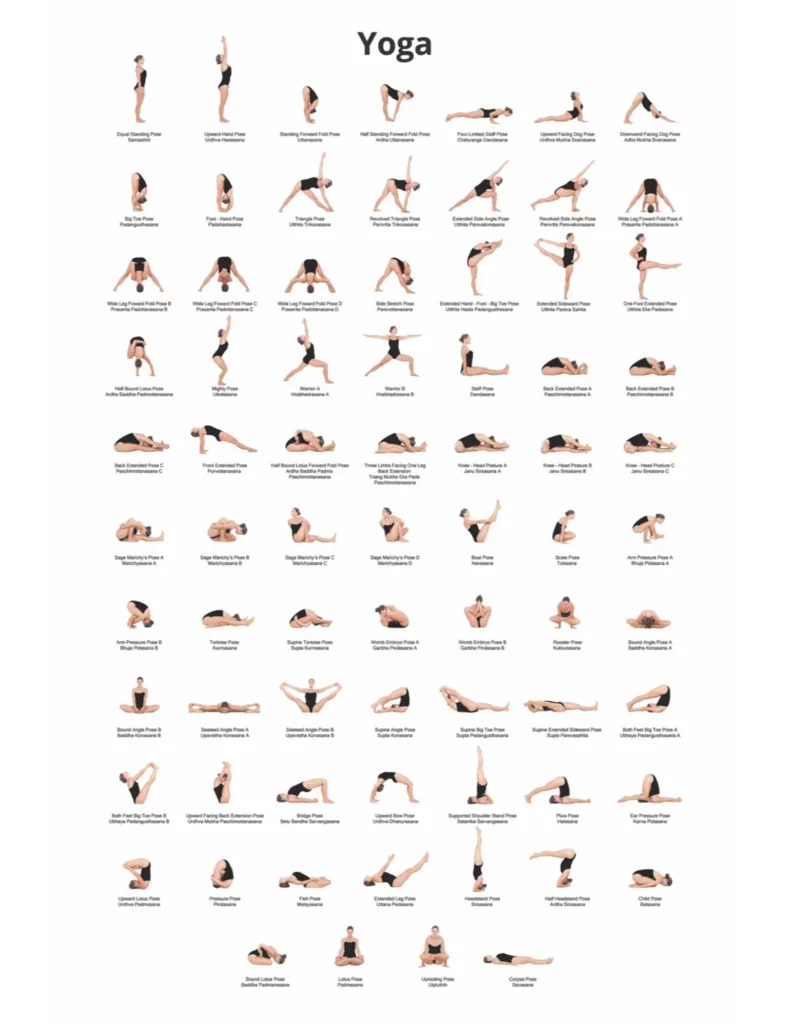
Reclining Bound Angle Pose (Supta Baddha Konasana)
- Description: Lie on your back with the soles of your feet together and your knees dropping outward.
- Benefits: Opens hips, and calms the mind.
- Tips: Use a bolster under your back for added support.
Supported Bridge Pose (Setu Bandhasana with Bolster)
- Description: Lie on your back and place a bolster under your lower back to lift your hips.
- Benefits: Relieves lower back tension, and promotes relaxation.
- Tips: Adjust the height of the bolster for comfort.
Pigeon Pose (Kapotasana)
- Description: From Downward-Facing Dog, bring one knee forward and extend the other leg backward.
- Benefits: Stretches hips and thighs, relieves tension.
- Tips: Keep your hips square and use a bolster under your hips for support.
Reclined Twist (Jathara Parivartanasana)
- Description: Lie on your back, bring one knee to your chest, then twist it across your body.
- Benefits: Stretches the spine and relieves tension.
- Tips: Keep your shoulders on the ground and breathe deeply.
Eagle Pose (Garudasana)
- Description: Stand on one leg, wrap the other leg around it, and do the same with your arms.
- Benefits: Improves balance, and strengthens legs and shoulders.
- Tips: Focus on a point to maintain balance and keep your core engaged.
Fish Pose (Matsyasana)
- Description: Lie on your back, arch your chest upward, and support yourself with your elbows.
- Benefits: Stretches the chest and neck, and improves posture.
- Tips: Keep your elbows close to your body and relax your head backward.
Revolved Triangle Pose (Parivrtta Trikonasana)
- Description: From Triangle Pose, twist your upper body and reach for the opposite foot.
- Benefits: Stretches the spine and improves flexibility.
- Tips: Keep your hips square and engage your core.
Happy Baby Pose (Ananda Balasana)
- Description: Lie on your back, bend your knees toward your chest, and grab your feet from the inside.
- Benefits: Relieves lower back tension, and stretches hips.
- Tips: Keep your tailbone on the ground and gently rock side to side for relaxation.
Bow Pose (Dhanurasana)
- Description: Lie on your stomach, bend your knees, and grab your ankles, then lift your chest and legs.
- Benefits: Strengthens the back, and opens the chest.
- Tips: Keep your neck relaxed and lift from your chest, not your head.
Upward-Facing Dog (Urdhva Mukha Svanasana)
- Description: Lie on your stomach, press into your hands, and lift your chest and thighs off the ground.
- Benefits: Strengthens arms and back, improves posture.
- Tips: Keep shoulders down and elbows close to your body.
Locust Pose (Salabhasana)
- Description: Lie on your stomach, lift your chest and legs off the ground, and extend your arms backward.
- Benefits: Strengthens the back and core, and improves posture.
- Tips: Keep your neck relaxed and engage your glutes for support.
Revolved Chair Pose (Parivrtta Utkatasana)
- Description: From the Chair Pose, twist your upper body and place one elbow on the opposite knee.
- Benefits: Stretches the spine and improves flexibility.
- Tips: Keep knees aligned and hips squared while twisting.
Standing Forward Bend (Uttanasana)
- Description: Stand with feet hip-width apart, then bend forward and reach toward your toes.
- Benefits: Stretches hamstrings and relieves tension.
- Tips: Keep your knees slightly bent if needed and relax your head and neck.
Extended Side Angle Pose (Utthita Parsvakonasana)
- Description: From Warrior II, extend one arm over your head and reach toward the ground with the other.
- Benefits: Stretches sides and legs, improves balance.
- Tips: Keep your chest open and gaze toward your top hand.
Supported Headstand (Salamba Sirsasana)
- Description: Kneel on the ground, place your forearms on the ground, and interlock your fingers. Slowly lift your legs into the air.
- Benefits: Improves balance, and strengthens core and shoulders.
- Tips: Use a wall for support and keep your core engaged.
Revolved Head-to-Knee Pose (Parivrtta Janu Sirsasana)
- Description: Sit with one leg extended and the other bent. Reach over your head toward the extended leg.
- Benefits: Stretches sides and legs, and improves flexibility.
- Tips: Keep your chest open and engage your core.
Revolved Crescent Lunge (Parivrtta Anjaneyasana)
- Description: From Crescent Lunge, twist your upper body and place one elbow on the opposite knee.
- Benefits: Stretches the spine and improves balance.
- Tips: Keep hips squared and focus on a point to maintain balance.
Standing Split (Urdhva Prasarita Eka Padasana)
- Description: From Standing Forward Bend, lift one leg into the air while keeping the other grounded.
- Benefits: Stretches hamstrings and strengthens legs.
- Tips: Keep your hips squared and reach toward the ground for support.
Supported Shoulderstand (Salamba Sarvangasana)
- Description: Lie on your back, lift your legs, and support your lower back with your hands.
- Benefits: Strengthens core and shoulders, improves circulation.
- Tips: Use a wall for support and keep your legs straight.
Legs-Up-the-Wall Pose (Viparita Karani)
- Description: Lie on your back with your legs extended against a wall.
- Benefits: Relieves leg tension, and promotes relaxation.
- Tips: Use a bolster under your lower back for added comfort.
Upward Plank Pose (Purvottanasana)
- Description: Sit with your legs extended, then lift your hips upward and press into your hands.
- Benefits: Strengthens arms and back, stretches the chest.
- Tips: Keep your shoulders down and neck relaxed.
Supported Fish Pose (Matsyasana with Bolster)
- Description: Lie on your back with a bolster under your upper back to lift your chest.
- Benefits: Stretches chest and shoulders, relieves tension.
- Tips: Keep your neck relaxed and adjust the bolster for comfort.
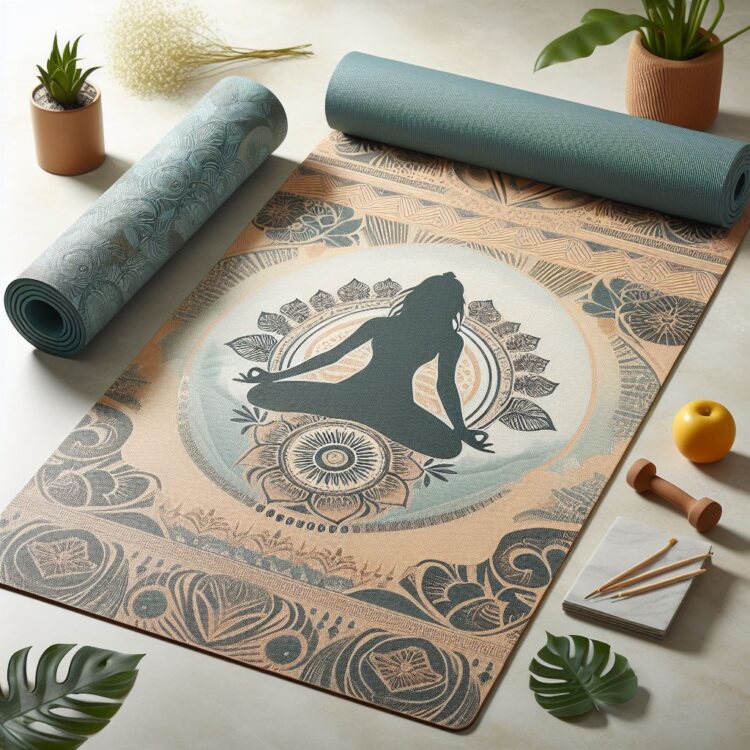
Supported Savasana (Savasana with Bolster)
- Description: Lie on your back with a bolster under your knees and arms relaxed at your sides.
- Benefits: Promotes relaxation and reduces stress.
- Tips: Keep your eyes closed and focus on deep breathing.
Sphinx Pose (Salamba Bhujangasana)
- Description: Lie on your stomach and prop yourself up on your forearms.
- Benefits: Stretches the back and strengthens the core.
- Tips: Keep shoulders down and elbows close to your body.
Side Plank Pose (Vasisthasana)
- Description: From the Plank Pose, shift weight to one arm and stack legs, lifting the other arm.
- Benefits: Strengthens arms and core, improves balance.
- Tips: Use a knee on the ground for stability and keep your core engaged.
Extended Puppy Pose (Uttana Shishosana)
- Description: From your hands and knees, extend your arms forward and press your chest toward the ground.
- Benefits: Stretches shoulders and back, relieves tension.
- Tips: Keep your hips aligned with your knees and relax your neck.
Revolved Triangle Pose (Parivrtta Trikonasana)
- Description: From Triangle Pose, twist your upper body and reach for the opposite foot.
- Benefits: Stretches spine, and improves flexibility.
- Tips: Keep hips squared and engage your core.
Extended Hand-to-Big-Toe Pose (Utthita Hasta Padangusthasana)
- Description: Stand on one leg and extend the other leg forward, holding your big toe.
- Benefits: Improves balance and strengthens legs.
- Tips: Use a strap for support and focus on a point to maintain balance.
Lotus Pose (Padmasana)
- Description: Sit with legs crossed, placing each foot on the opposite thigh.
- Benefits: Promotes relaxation, and enhances flexibility.
- Tips: Keep your back straight and use a bolster under your hips if needed.
Supported Reclining Bound Angle Pose (Supta Baddha Konasana with Bolster)
- Description: Lie on your back with the soles of your feet together and knees dropping outward, with a bolster under your back.
- Benefits: Opens hips, and promotes relaxation.
- Tips: Adjust the bolster for comfort and keep your shoulders relaxed.
Standing Bow Pose (Dandayamana Dhanurasana)
- Description: Stand on one leg and reach backward to grab your ankle, then extend the other arm forward.
- Benefits: Improves balance and stretches the chest.
- Tips: Focus on a point to maintain balance and engage your core.
These 50 yoga poses for beginners offer a comprehensive guide to starting your yoga practice. Whether you’re looking to improve flexibility, strength, or relaxation, this list has something for everyone. Start with the basic poses and gradually work your way to more advanced poses as you gain confidence and strength. Happy yoga!
